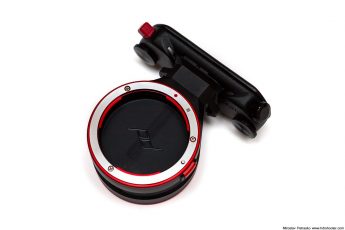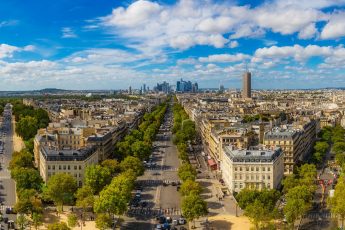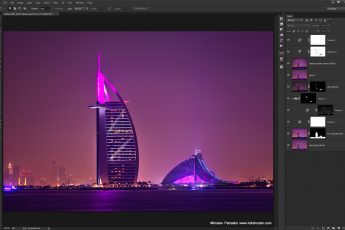Photo problems
There are a few basic problems that you see over and over in many photos. Fixing them is really easy, so it’s sometimes strange to see so many photographers not doing so. Today I will go through a few of them and show you how to fix them. I will be sticking mostly to Photoshop here, but few can be easily fixed also in Lightroom.
Chromatic aberrations
I’m always surprised when I see chromatic aberrations in edited photos. There are just so simple to get rid off. You can even set up Lightroom to do it for you when you import photos.
In Lightroom, you just have to go into the Develop module, scroll down in the right panel and under Lens Corrections check the box by Remove Chromatic Aberrations. This works in almost all cases.
In Photoshop, the simplest way is to use Camera RAW to do so. You should do it on the RAW file, as then it’s just one click. If it’s not a RAW file, it’s a bit more work. When you open a RAW file in Photoshop, the Camera RAW will open automatically. Just go to the Lens Correction tab and check to remove chromatic aberrations. All done. In the case you don’t have the RAW file, you open your file, and then go to Filter/Camera RAW filter. Again you go into the Lens Correction tab, but it will look a bit different. You will have only manual options to do so. Just move the Purple and Green sliders to get rid off the aberration.
Perspective distortion
Another problem that is very easy to fix is Perspective distortion. If you are not familiar with it, it happens when your camera is not perfectly leveled when you take your photos. As a result, the objects in your photo may look like they are falling inward or outward.
This can be fixed in Lightroom, but I do prefer to use Photoshop. In Lightroom, you first have to rotate the image, so the horizon is perfectly leveled. If you don’t do this, you can’t remove perspective distortion properly. Once this is done, in the right panel scroll down to Transform and move around the Vertical transformation until the edge of the image aligns with all the vertical lines in the photo.
In Photoshop my preferred way to do this is to go into Free transform (Edit/Free Transform or Ctl+T), then right click on the image and choose perspective. Now drag the bottom corners out or in, until you get the lines perfectly vertically. If the distortion is very strong, you will also have to scale the image up. Just right click again, choose scale, hold down Shift and drag the middle top point up or down. You may need to go back into perspective edit afterward, as scaling can change the distortion.
I prefer Photoshop to Lightroom, as Lightroom automatically crops the image down to the original size and you are losing big areas of the photo due to the correction. In Photoshop you can just easily expand the canvas of the photo, so have a bigger photo in the end.
You can find a more detailed description of this here.
Color Banding
Color banding is created when you lower the number of colors in a color transition. Mostly it’s created when you save a photo into lower quality. If you have a lot of skies in your photos, you definitively have seen it.
The solution here is very simple, just add noise. Noise will add variation to the affected area, so the transitions will become more natural. You can even first remove noise, to get rid of strong noise and color noise, and then add back some softer noise, to prevent color banding.
To do so, just choose in Photoshop, Filter/Noise/Add Noise with the amount of 1%, Gaussian, and Monochromatic. Once done, check the image, if the color banding is still visible add it again with the same settings. You can repeat this until the problem is gone.
Don’t forget that you don’t have to use it on the whole image, only where it’s needed. Also if you are using layers in Photoshop, merge them into a new one to see how your photo really looks. The previews are not always accurate.
You can find a more detailed article on this topic here.
Lens Flares
I hate lens flares. I even hate them more in computer games. Who thinks that human eyes and brains make lens flares? Such a stupid idea. But you can quickly get rid of them in photos. The best way to get rid of them to not get them at all, but that’s not always possible.
There are two ways, the good way, and the other way. The good way is to take multiple photos where you shade the light source with your hand and then put them together. You can see a detailed description of that here.
The other way is to use Photoshop tools to do so. The results will be not perfect but with a bit of practice, you can do it. There are many things you can do. You can use content aware to fix smaller spots. Use the clone stamp tool for things that repeat or are random in structure. Copy over other parts forms the same image if things repeat.
I find the best thing to do, is to do all the fixes on a new layer in Photoshop, and once done, hide it, and using a layer mask just paint in the areas you really need. Like this, the fixes will look the most natural.
Dust Spots
Clean your lens often, really often. But if you don’t and shoot at smaller apertures often, clean your photos. A big ugly dust spot will make your photo looks so much worse. Just a short time ago, I saw a photo used as a background in Google Hangouts. It was a nice photo, but there was a huge dust spot right in the middle. It was so ugly.
You can either remove them in Photoshop or also in Lightroom. Both offer tools to identify where they are. In Lightroom, if you select Spot Removal, you will find a Visualize Spots checkbox under the image. Check it and move the slider next to it, until you see the spots in your photo. You can find the same setting in Camera RAW that you can open from filters in Photoshop.
While this works, this is not my favorite way to identify dust spots. I prefer to do create a new layer in Photoshop with an extreme curve. This will create a big contrast between the dust spots and the surrounding area, so showing you exactly where they are. Then I can just use content aware or the clone stamp tool on the layer under it to fix them.
Here is a more detailed article on how to remove dust spots, and here is one how to identify photo problems using the curve technique.











Leave a Comment